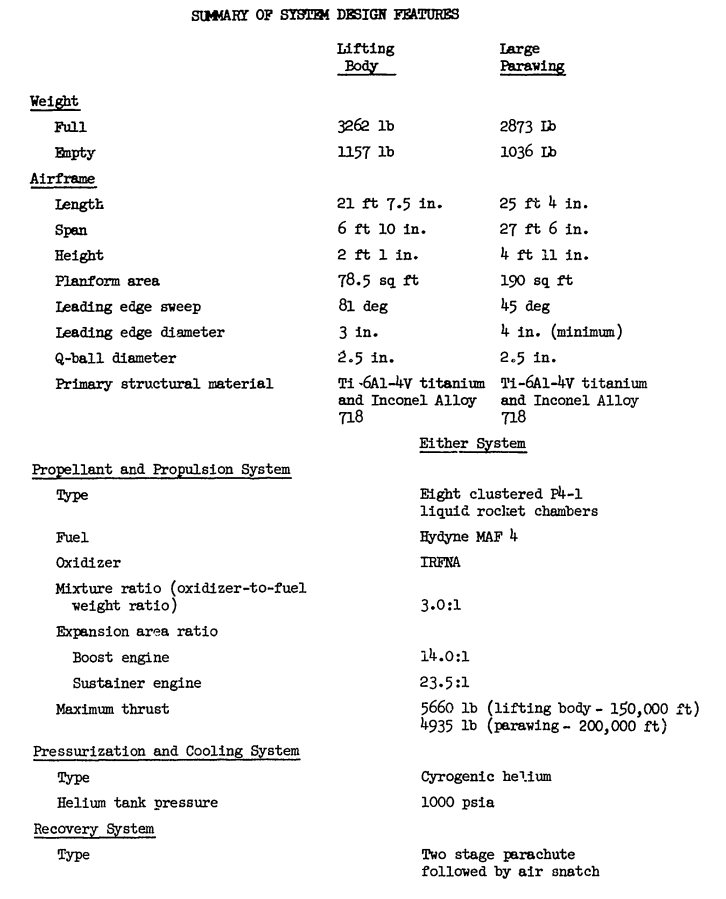The HI-HICAT (High-High Altitude Critical Atmospheric Turbulence) was a 1966 Lockheed-California design study for a research rocket meant to cruise between 70,000 and 200,000 feet altitude at up to Mach 6, after launch from an F-4. It would, as the name suggests, be used to research clear-air turbulence at those altitudes. Two designs were studied… a lifting body configuration, and a more conventional sounding-rocket configuration, but a sounding rocket equipped with a stowed Rogallo-wing (like an old hang glider). Studies showed that the folding-wing was the preferred configuration, being capable of fulfilling the mission over a wider range of altitudes, although for the mid-altitudes of 100,000 to 150,000 feet, the lifting body would be preferred. The parawing design used pressure-fed rocket engines, while the lifting body design used turbopump-fed engines.
The F-4 would carry the rocket to Mach 2/35,000 feet, and go into a climb until the preset launch angle was reached. The HI-HICAT would then climb to altitude, shut down the booster rocket engines (leaving on a sustainer) and deploy the parawing, and cruise at either Mach 3/70,000 feet or Mach 6/200,000 feet. After sustainer burnout, the vehicle would maintain cruise altitude while deccelerating to Mach 1.5, at which point it would begin descent. The end of the mission would come when it would deploy a parachute and be air-snatched by a C-130.

Oct 312009





Sorry, the comment form is closed at this time.